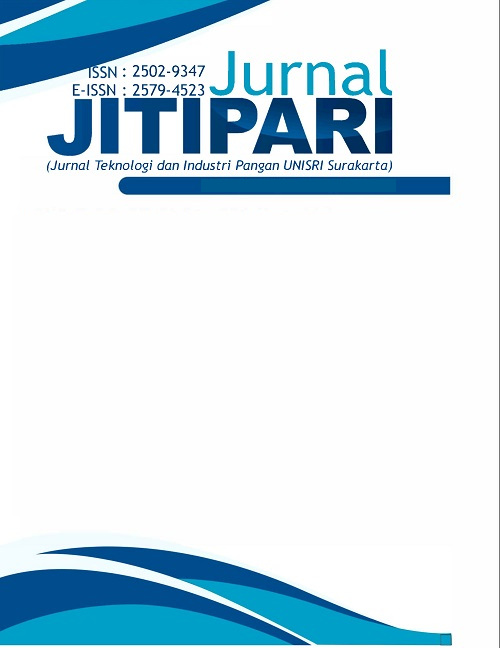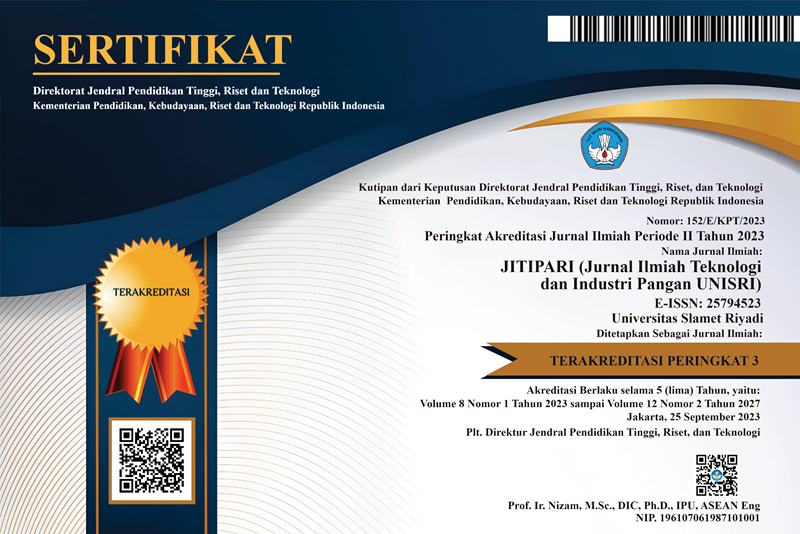Antioxidant Activity of Rose Tea (Rosa damascene) with Various Types of Sugar and Rose Tea Concentration
DOI:
https://doi.org/10.33061/jitipari.v8i2.7347Abstract
Kombucha tea is a traditional beverages product manufactured from fermented tea and sugar solutions. Using Acetobacter xylinum sa starter. Kombucha tea has a refreshing sour taste, but the distinctives aroma make kombucha tea less attractives to consumers. Red roses (Rosa damascene) are a source of anthocyanin pigments that have not been widely used. In addition, to increase the economic value of roses. Based on research that has been done, red roses contain antioxidants in the form of purplish red anthocyanins. The purpose of this study was to determine the effect of the type of sugar and the concentration of rose extract on the characteristics of rose kombucha produced. This study used Completely Randomized Design (CRD). The factors used were the concentration of rose tea (1g/250ml, 2g/250ml, 3g/250ml) and variations in the type of sugar (palm, sand, fine). The best chemical and organoleptic analysis based on the highest antioxidant activity was the addition of palm sugar and the concentration of the addition of rose tea 1g/250ml with a total phenolic of 10.17mg GAE/L, total dissolved solids (TPT) 11.10%, acidity (pH) 3.86, antioxidant activity 48.28%, vitamin C 11.41%, 13.63% for total sugar, sour taste score 3.06, rose flavor 2.15 and 1.10 for overall preference the addition of palm sugar and the concentration of the addition of rose tea 1g/250ml. Kombucha made from rose extract can be an alternative functional food.
Downloads
Published
How to Cite
Issue
Section
License
Copyright (c) 2023 kurnianti kumala setyaningrum, Nanik Suhartatik, Yannie Asrie Widanti

This work is licensed under a Creative Commons Attribution-ShareAlike 4.0 International License.
Authors who publish this journal agree to the following terms:
- Authors retain copyright and grant the journal right of first publication with the work simultaneously licensed under a Creative Commons Attribution-ShareAlike 4.0 International (CC BY-SA 4.0) that allows others to share the work with an acknowledgement of the work's authorship and initial publication in this journal.
- Authors can separately make additional contractual arrangements for non-exclusive distribution published by the journal (e.g., publish it in a book), with an acknowledgement of its initial publication in this journal.
- Authors are allowed and encouraged to send their work via online (e.g., in the institutional repositories or their website) after published by the journal.










